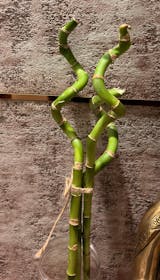enus Flytrap Plants
Venus flytraps are one of the most well-known types of carnivorous plants. These plants are native to the United States and are famous for their unique trapping mechanism that uses modified leaves to capture insects.
Pitcher Plants
Pitcher plants are another type of carnivorous plant that are known for their unique trap-like leaves. These plants are found all over the world, and some species can grow quite large.
Sundew Plants
Sundew plants are carnivorous plants that are known for their sticky leaves. When an insect lands on a sundew leaf, the leaf folds up around the insect, trapping it and allowing the plant to digest it.
Nepenthes Plants
Nepenthes plants are also known as tropical pitcher plants, and they are found in parts of Asia and Australia. These plants have a unique, tube-like structure that captures insects, and they are often grown as houseplants.
Sarracenia Plants
Sarracenia plants are native to North America and are known for their unique, trumpet-shaped leaves that trap insects. These plants can grow quite large and are popular among carnivorous plant enthusiasts.
Drosera Plants
Drosera plants, also known as sundews, are a diverse group of carnivorous plants that are found all over the world. These plants are known for their sticky leaves, which capture and digest insects.
Bladderwort Plants
Bladderwort plants are aquatic carnivorous plants that are found in ponds and other bodies of water. These plants have tiny bladders on their leaves that trap and digest small aquatic animals.
Cobra Plants
Cobra plants are native to North America and are known for their unique, hooded leaves that trap insects. These plants are popular among carnivorous plant enthusiasts and are often grown as houseplants.
Waterwheel Plants
Waterwheel plants, also known as Aldrovanda, are aquatic carnivorous plants that are found in ponds and other bodies of water. These plants have small, trap-like leaves that capture and digest small aquatic animals.
Butterwort Plants
Butterwort plants are native to Europe and North America and are known for their sticky leaves, which capture and digest insects. These plants are popular among carnivorous plant enthusiasts and are often grown as houseplants.











































